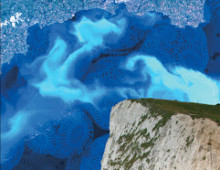Ehux – The Alga of Many Faces
Known by the researchers who sequenced it at the Department of Energy Joint Genome Institute as “The Beast”, and considered the “Flowers of the Ocean” by others, Emiliania huxleyi has proved to be a single-celled coccolithophore of many faces. The third most abundant group of phytoplankton, Ehux is the basis of most ocean food chains,… [Read More]

